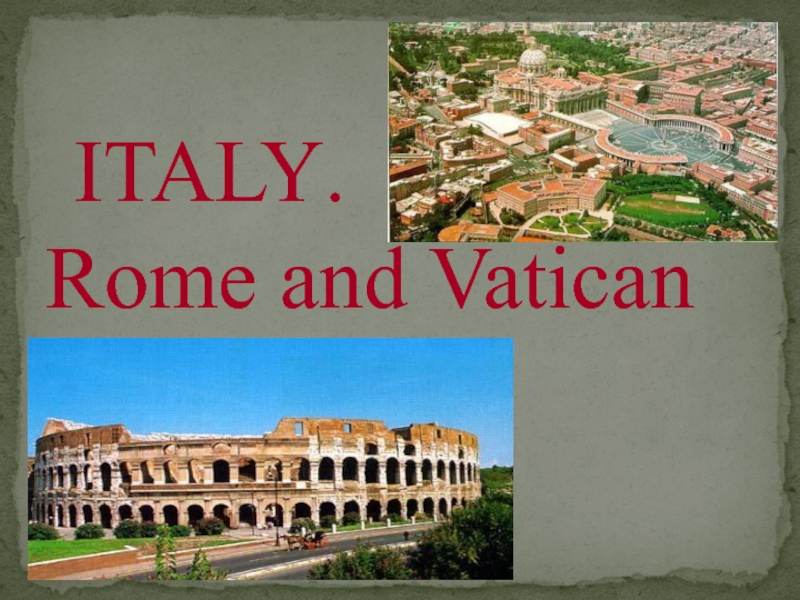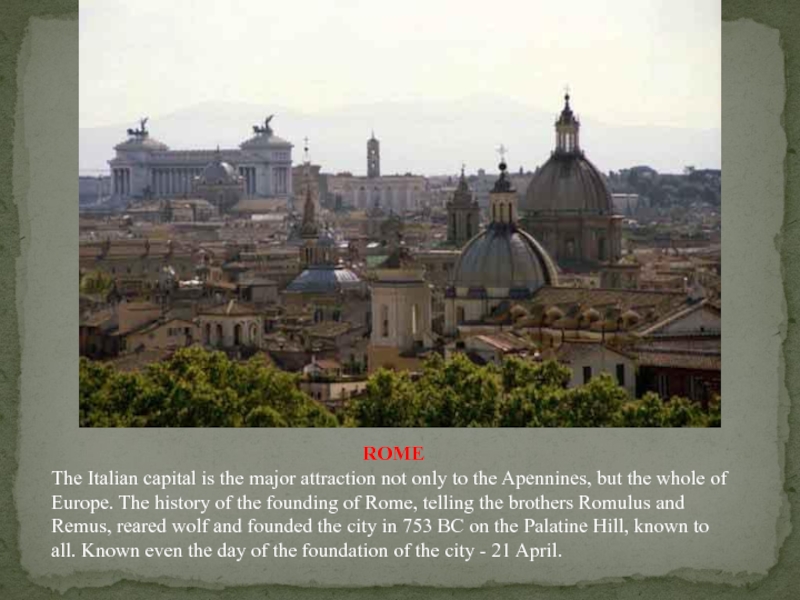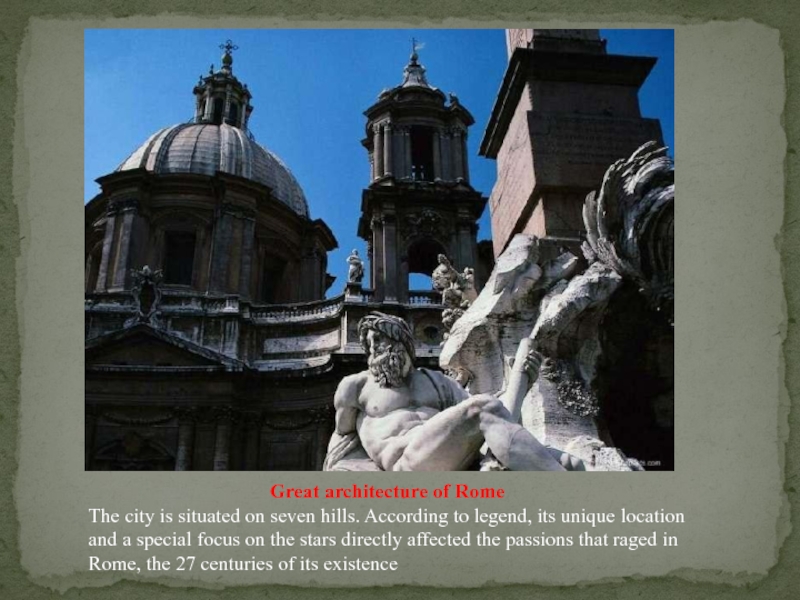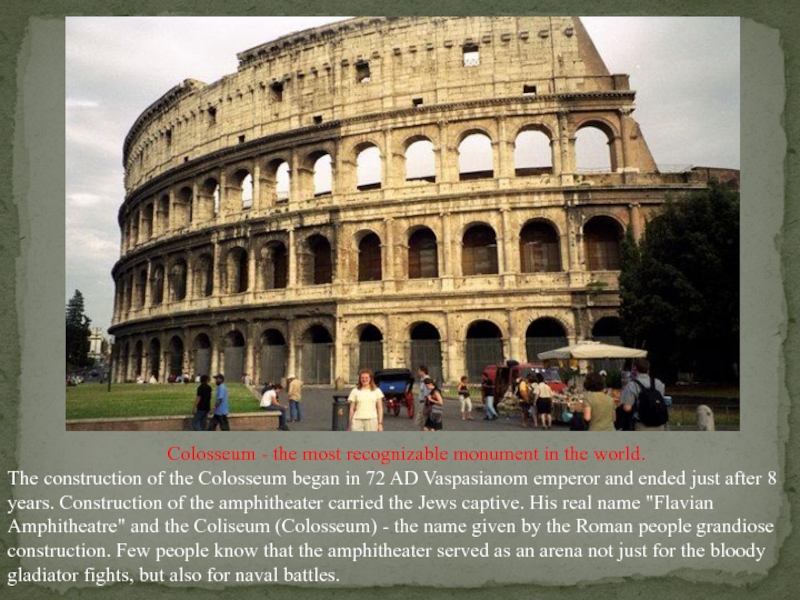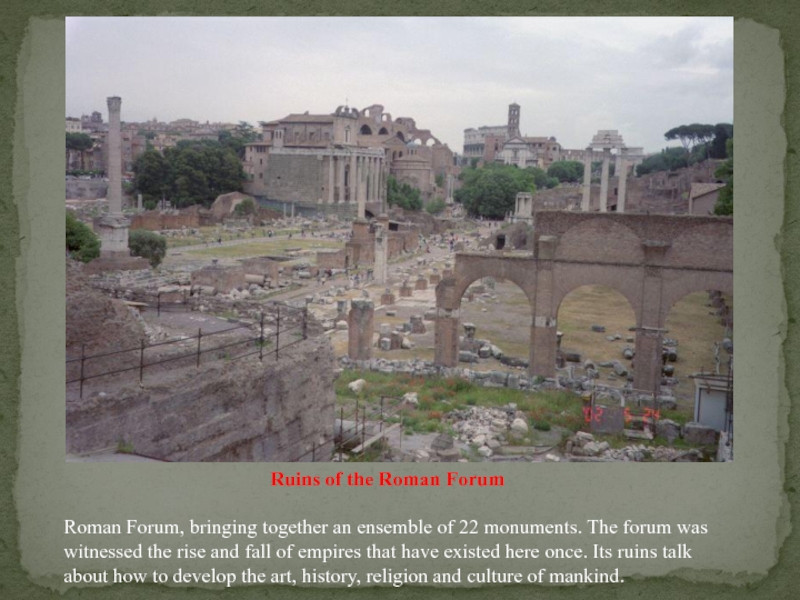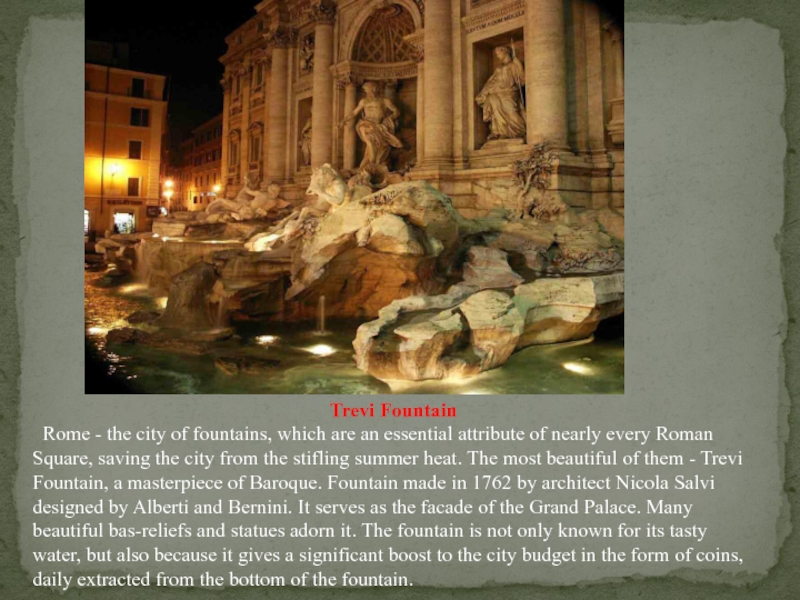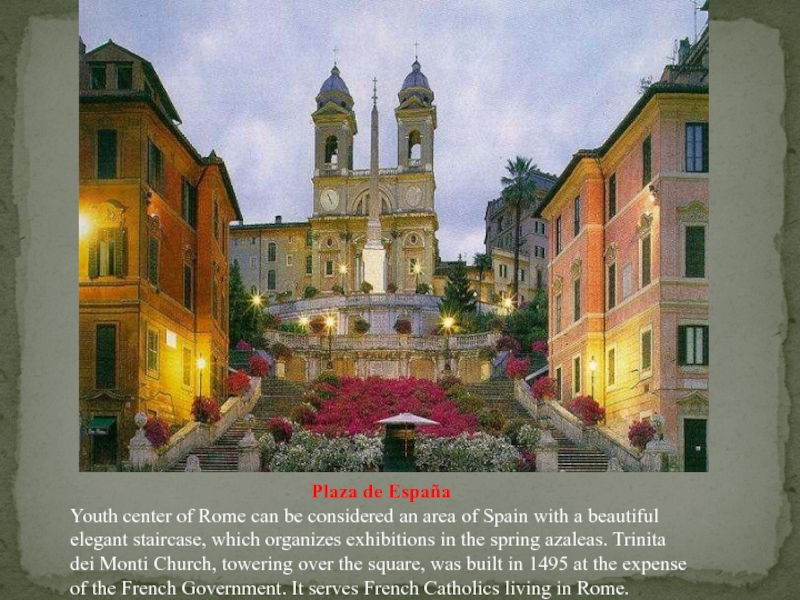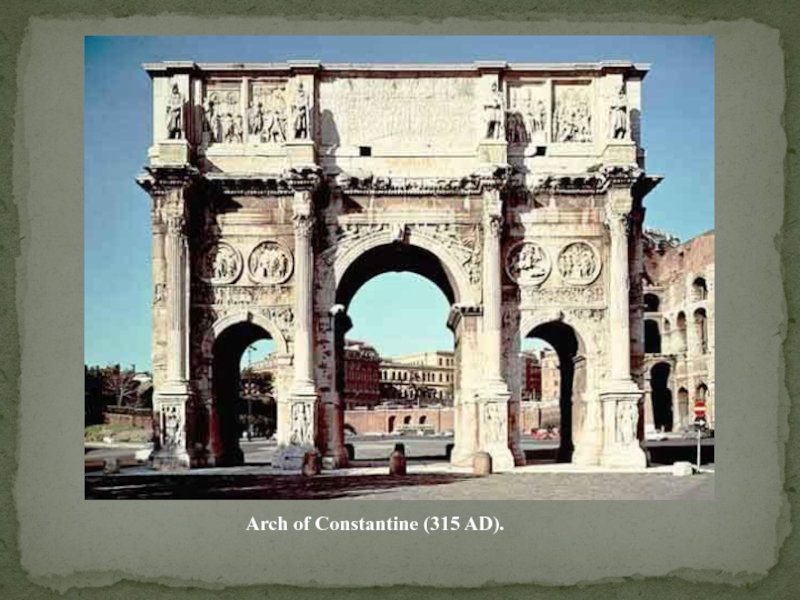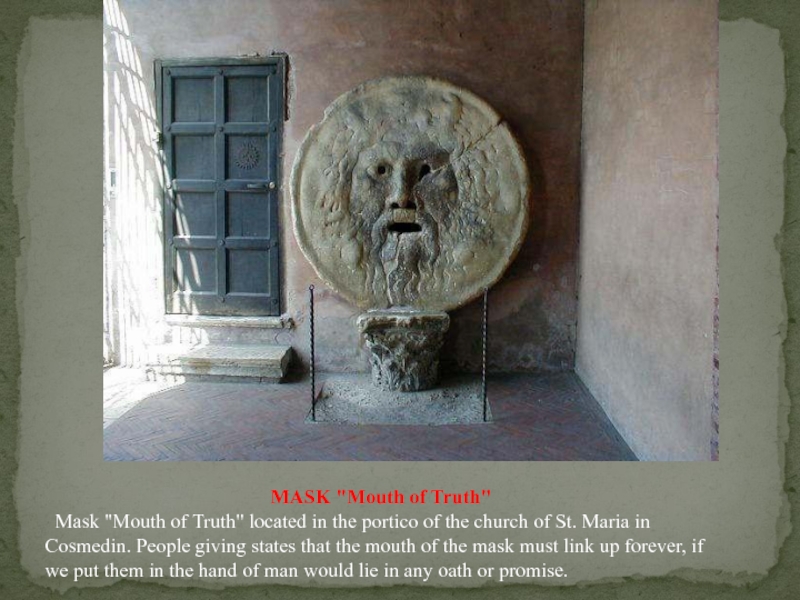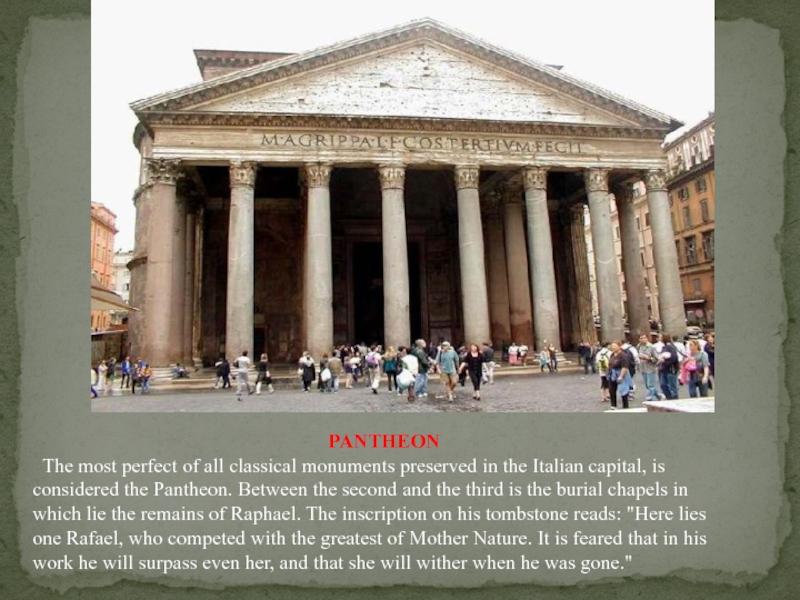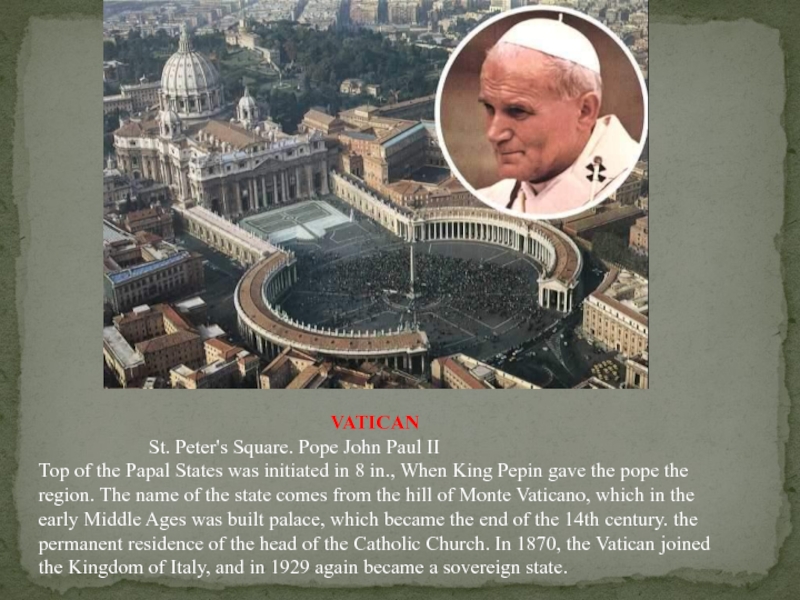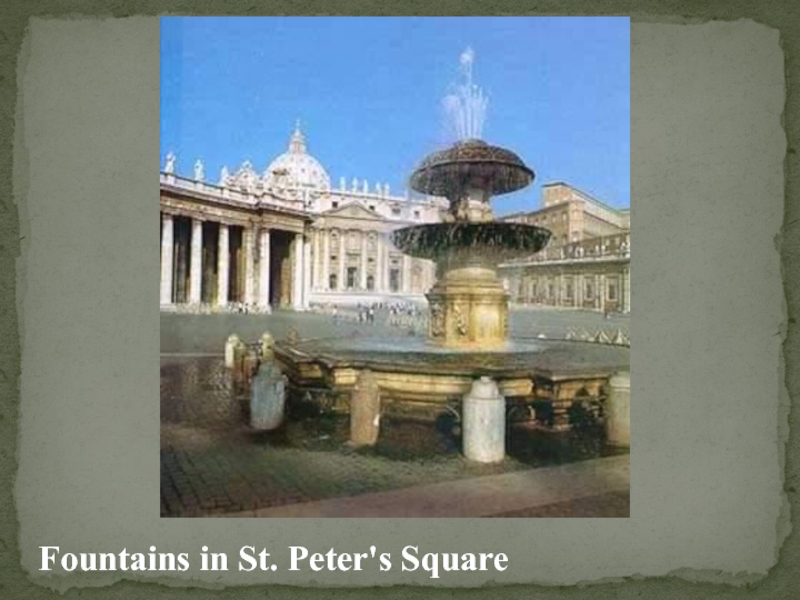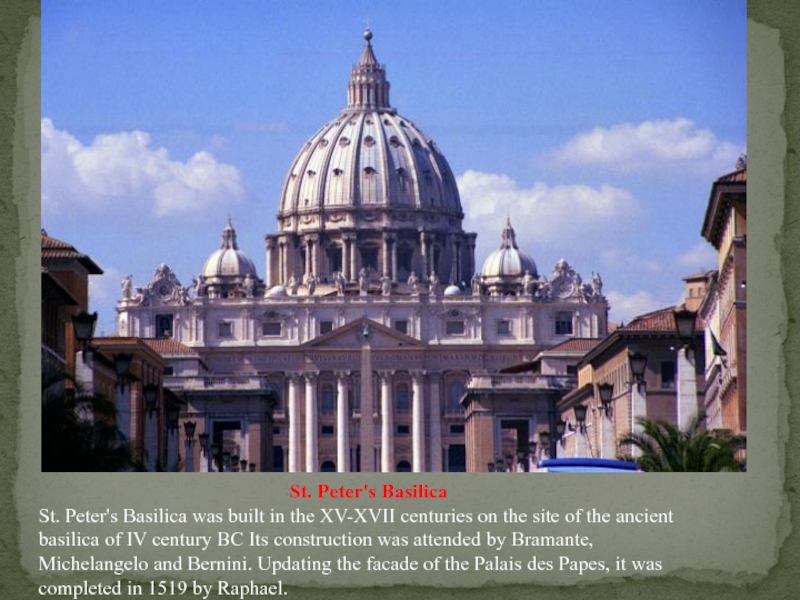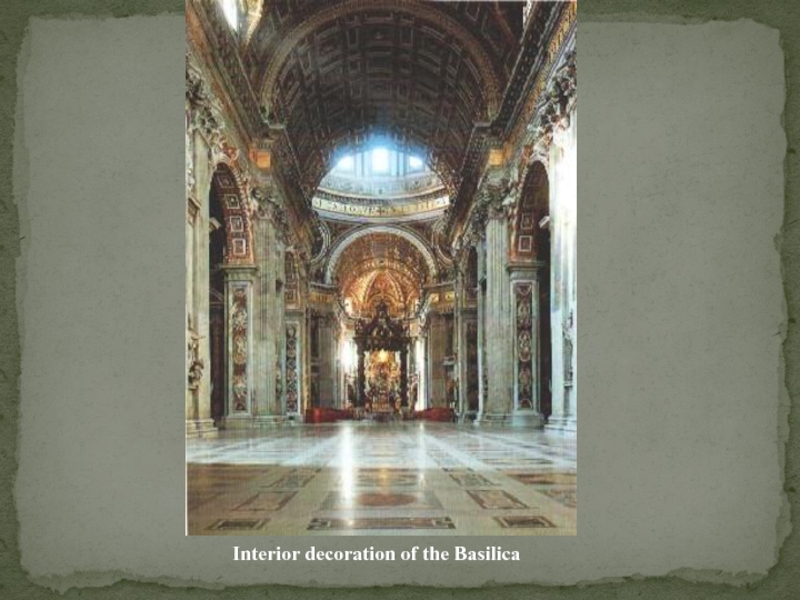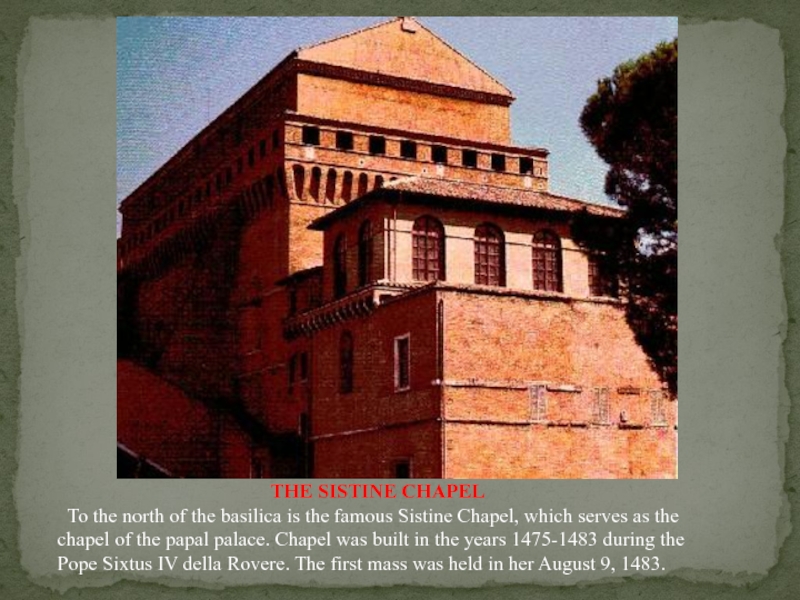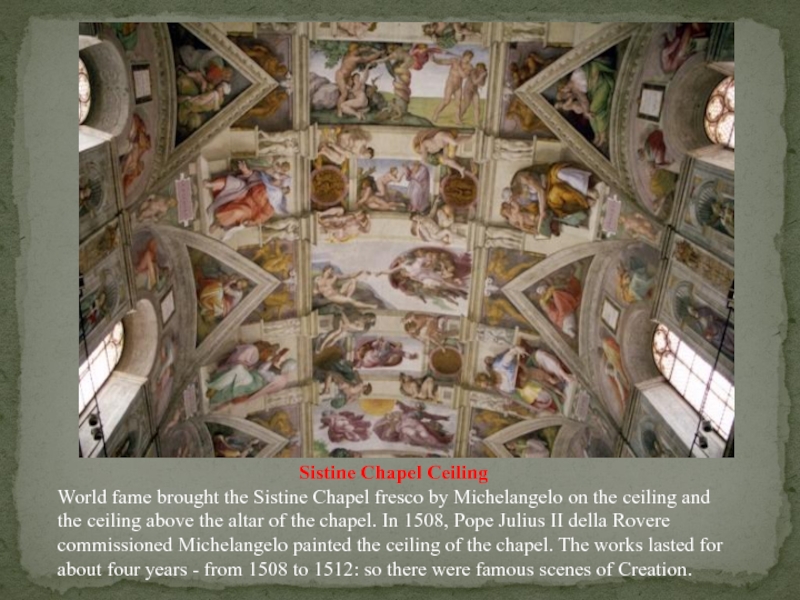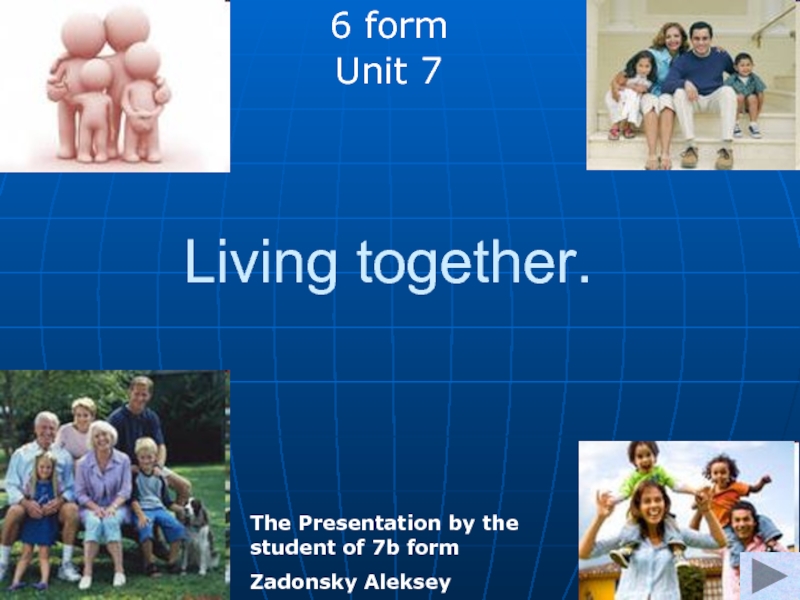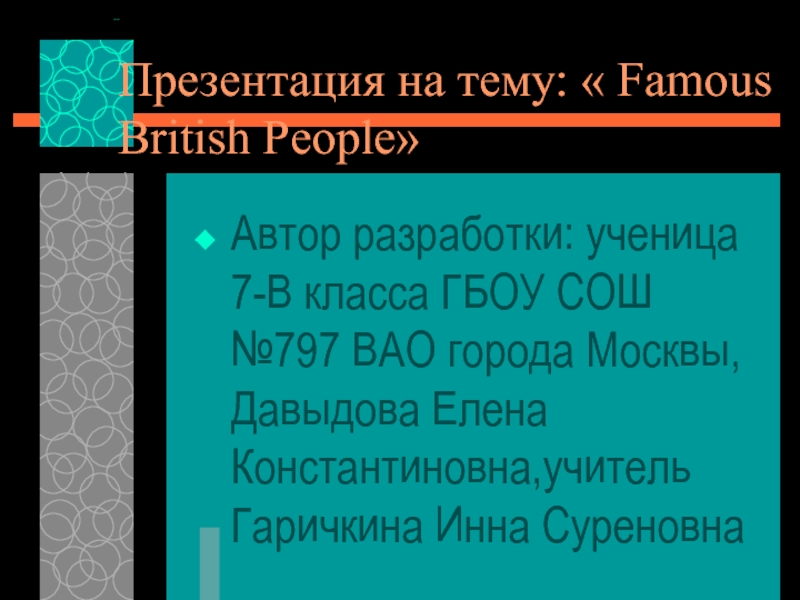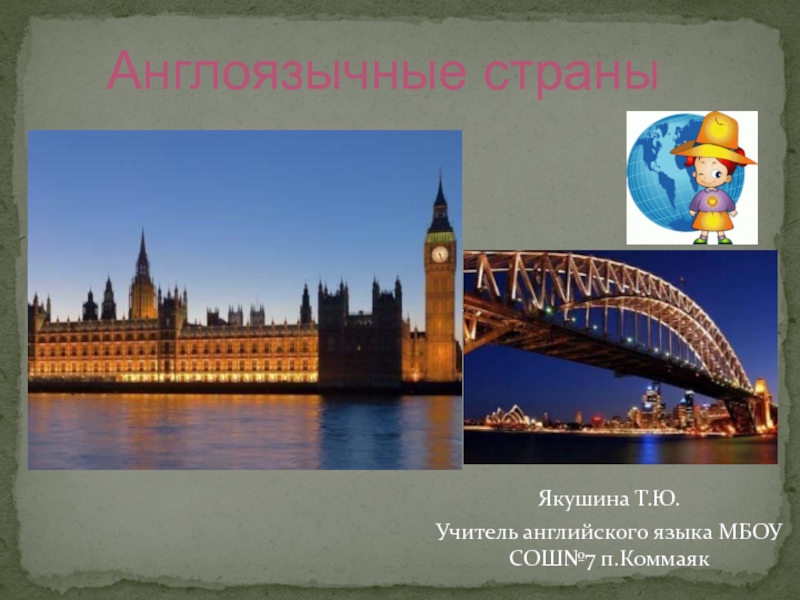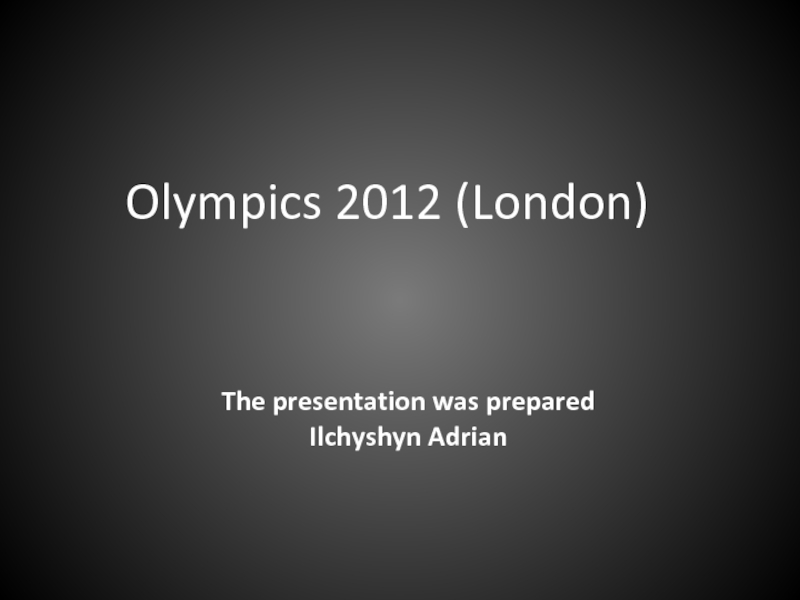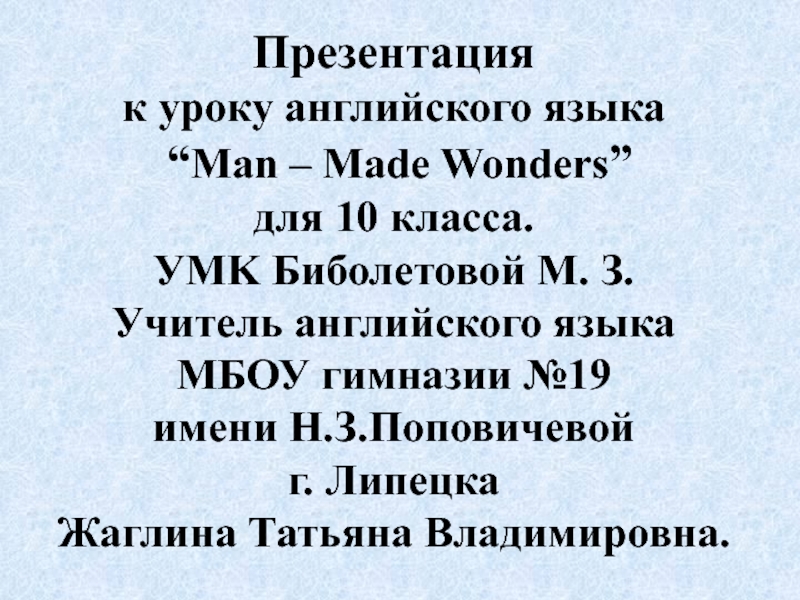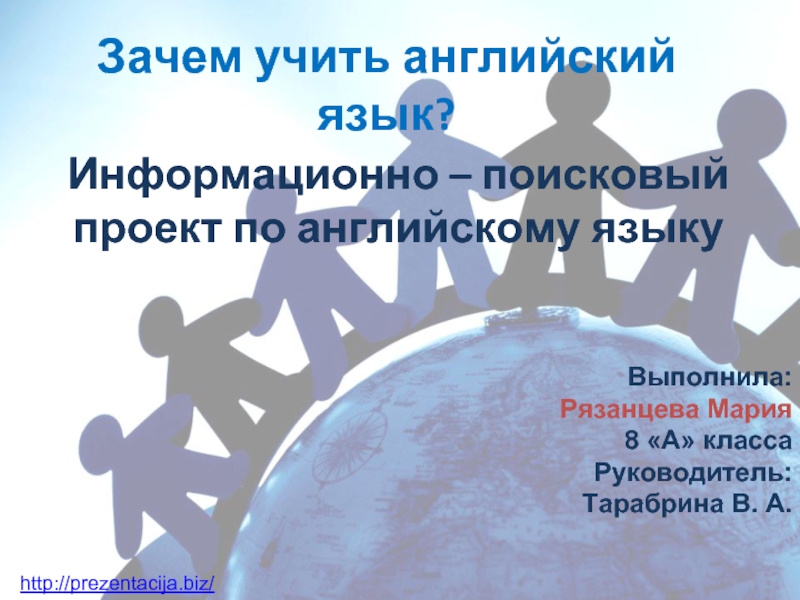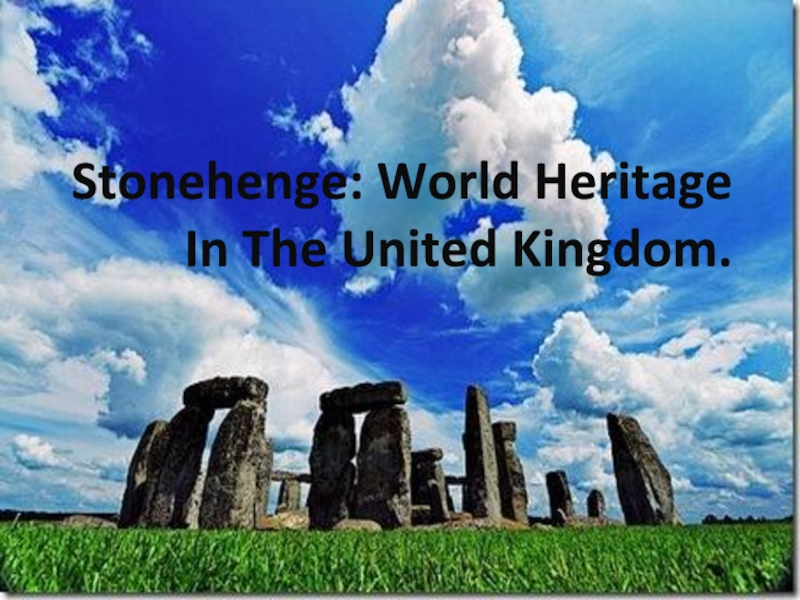Слайд 2ROME
The Italian capital is the major attraction not only to
the Apennines, but the whole of Europe. The history of
the founding of Rome, telling the brothers Romulus and Remus, reared wolf and founded the city in 753 BC on the Palatine Hill, known to all. Known even the day of the foundation of the city - 21 April.
Слайд 3Great architecture of Rome
The city is situated on seven hills.
According to legend, its unique location and a special focus
on the stars directly affected the passions that raged in Rome, the 27 centuries of its existence
Слайд 4Colosseum - the most recognizable monument in the world.
The construction
of the Colosseum began in 72 AD Vaspasianom emperor and
ended just after 8 years. Construction of the amphitheater carried the Jews captive. His real name "Flavian Amphitheatre" and the Coliseum (Colosseum) - the name given by the Roman people grandiose construction. Few people know that the amphitheater served as an arena not just for the bloody gladiator fights, but also for naval battles.
Слайд 5
Ruins of the Roman Forum
Roman Forum, bringing together
an ensemble of 22 monuments. The forum was witnessed the
rise and fall of empires that have existed here once. Its ruins talk about how to develop the art, history, religion and culture of mankind.
Слайд 6Trevi Fountain
Rome - the city of fountains, which are
an essential attribute of nearly every Roman Square, saving the
city from the stifling summer heat. The most beautiful of them - Trevi Fountain, a masterpiece of Baroque. Fountain made in 1762 by architect Nicola Salvi designed by Alberti and Bernini. It serves as the facade of the Grand Palace. Many beautiful bas-reliefs and statues adorn it. The fountain is not only known for its tasty water, but also because it gives a significant boost to the city budget in the form of coins, daily extracted from the bottom of the fountain.
Слайд 7
Plaza de España
Youth center of
Rome can be considered an area of Spain with a
beautiful elegant staircase, which organizes exhibitions in the spring azaleas. Trinita dei Monti Church, towering over the square, was built in 1495 at the expense of the French Government. It serves French Catholics living in Rome.
Слайд 8Arch of Constantine (315 AD).
Слайд 9
MASK "Mouth of Truth"
Mask "Mouth
of Truth" located in the portico of the church of
St. Maria in Cosmedin. People giving states that the mouth of the mask must link up forever, if we put them in the hand of man would lie in any oath or promise.
Слайд 10PANTHEON
The most perfect of all classical monuments preserved in
the Italian capital, is considered the Pantheon. Between the second
and the third is the burial chapels in which lie the remains of Raphael. The inscription on his tombstone reads: "Here lies one Rafael, who competed with the greatest of Mother Nature. It is feared that in his work he will surpass even her, and that she will wither when he was gone."
Слайд 11
VATICAN
St. Peter's Square.
Pope John Paul II
Top of the Papal States was initiated
in 8 in., When King Pepin gave the pope the region. The name of the state comes from the hill of Monte Vaticano, which in the early Middle Ages was built palace, which became the end of the 14th century. the permanent residence of the head of the Catholic Church. In 1870, the Vatican joined the Kingdom of Italy, and in 1929 again became a sovereign state.
Слайд 12St. Peter's Square. Egyptian Obelisk
The Vatican is separated from the
rest of the Roman wall and the colonnade of the
square of St. Peter. It takes only 44 hectares and has less than a thousand inhabitants. However, the Vatican has its own coat of arms and flag, it mints its own coins in circulation throughout Italy.
Слайд 14
St. Peter's Basilica
St. Peter's Basilica was
built in the XV-XVII centuries on the site of the
ancient basilica of IV century BC Its construction was attended by Bramante, Michelangelo and Bernini. Updating the facade of the Palais des Papes, it was completed in 1519 by Raphael.
Слайд 15Interior decoration of the Basilica
Слайд 16
THE SISTINE CHAPEL
To the
north of the basilica is the famous Sistine Chapel, which
serves as the chapel of the papal palace. Chapel was built in the years 1475-1483 during the Pope Sixtus IV della Rovere. The first mass was held in her August 9, 1483.
Слайд 17
Sistine Chapel Ceiling
World fame brought the
Sistine Chapel fresco by Michelangelo on the ceiling and the
ceiling above the altar of the chapel. In 1508, Pope Julius II della Rovere commissioned Michelangelo painted the ceiling of the chapel. The works lasted for about four years - from 1508 to 1512: so there were famous scenes of Creation.
